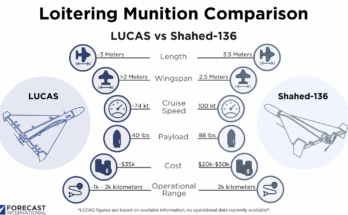
The Royal Canadian Navy is pushing the government to support a program to build up to 12 new submarines, according to a report from the Ottawa Citizen.
The government is conducting a major defense policy review to reassess ongoing acquisition efforts and future requirements. The Navy is already in the early process of studying how to replace its current fleet of four Victoria class subs via the Canadian Patrol Submarine Project (CPSP), and the service hopes a new submarine program will make it into the updated defense policy.
This isn’t the first time a fleet of 12 subs has been suggested for the Navy. In 2018, a Senate defense committee recommended replacing the Victoria class with a fleet of 12 new submarines, which would allow for six boats on each coast. The committee cited the growth of Russia’s Northern Fleet and the need for Canada to defend its territory in the Arctic. The following year, the Commons defense committee expressed support for a submarine replacement program, arguing the Navy should procure a fleet capable of operating beneath ice. The government ultimately rejected the proposals for a new submarine fleet. Rather, a Victoria class modernization program was launched to extend the life of the fleet.
Russia’s invasion of Ukraine may be exacerbating concerns among Canadian Navy leadership that Moscow will eventually plan more aggressive inroads to the Arctic waters in Canada’s far North. Arctic sovereignty has long been a tenet of Canadian defense policy, but Ottawa has often lacked the equipment needed to fully carry out that mission. The Navy’s recommendation for a larger sub fleet would help fortify Canada’s ability to patrol and defend its long coasts and vast Arctic waters, but the service faces an uphill battle.
Industry sources have suggested a new fleet of 12 subs would cost at least CAD60 billion. However, Canadian shipbuilding programs have a history of going over budget. For example, the projected cost of the Navy’s planned 15-strong frigate fleet has grown from CAD14 billion to over CAD80 billon, according to estimates from the Parliamentary Budget Officer. Deliveries of the new frigates won’t begin until the early 2030s, and the program will put pressure on the military’s budget into the 2040s. Canada has outlined several plans to bolster defense spending in recent years, but the increases would keep Canada well below NATO’s target of spending two percent of GDP on defense. A significant amount of additional funding would be required to support the Navy’s dream submarine fleet.
Even if the Navy had the resources in place, the service has also faced a sailor shortage that would make it difficult to operate a dozen submarines. Recruitment challenges could potentially be addressed over time, but solutions would likely require even more funding to attract new personnel.
The Navy has also struggled with the current Victoria class, which could raise concerns about building a larger submarine fleet. Canada has only had limited use of the Victoria class subs, which are ex-Upholder class diesel-electric submarines acquired from the U.K. Royal Navy in 1998. At the time, the ships were essentially new, but process of bringing these vessels into service was fraught with difficulty. Since then, the subs have continued to experience various problems – ranging from faulty welds to mechanical failures and accidental damage – that have all significantly limited their operational use over the years.
So far, the government has given no indication it will support the Navy’s request for a larger sub force. In the end, such a sizeable fleet expansion likely won’t make it into Ottawa’s revised defense policy, but the updated strategy document will hopefully address future submarine requirements. The existing subs are being modernized to keep them in service until the late 2030s, but defense officials have estimated it could take 15 to 25 years to field a new submarine. With that kind of timeline in mind, the Navy may already be behind schedule to replace the Victoria class.
Shaun's deep-rooted interest in military equipment continues in his role as a senior defense analyst with a focus on the United States. He played an integral role in the development of Forecast International's U.S. Defense Budget Forecast, an interactive online product that tracks Pentagon acquisition programs throughout the congressional budget process. As editor of International Military Markets – North America, Shaun has cultivated a deep understanding of the vast defense markets in the United States and Canada. He is a regular contributor to Forecast International's Defense & Security Monitor blog and has co-authored white papers on global defense spending and various military programs.




